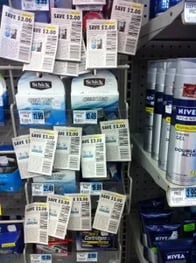


Deal-mania. It’s everywhere – from the freakish examples of Extreme Couponers on TV – to the daily email sites like Groupon and Living Social– all the way down to the old standard – the Sunday paper inserts.
We, the consumers, just can’t seem to get enough discounts…
And retailers are caught in the trap of trying to show that they are giving a better deal to their customers than their competitors are.
That became clear to me while strolling through my local Rite Aid. In every aisle I saw coupons taped to the front of many products. It didn’t matter if it was on a shelf, hanging from a pegboard or stacked on an end-cap.
These little white slips with $2.00 and $1.00 off became the focus of anyone looking to buy almost any product in the store. The products themselves disappeared behind the paper.
Which meant we noticed only the “deal”; then our eyes glazed over and we moved on. The coupons had no meaning, they were a distraction. If every item could be discounted, the coupons were no longer sale attracters but obstacles in the way of finding what you came in for. That was in New York.
In a similar twist, when I walked into a Safeway in Portland a few days later, they had an additional 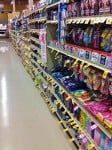 yellow tag on nearly every product on the shelf. Some were sales tags, some were “new low price tags,” some were “reduced for quick sale tags” and some were club price tags.
yellow tag on nearly every product on the shelf. Some were sales tags, some were “new low price tags,” some were “reduced for quick sale tags” and some were club price tags.
Rite Aide and Safeway's extreme tagging strategy made their stores look cheap - and not in a good way. It’s like a panicked marketer said, “Tag as many as possible to raise sales.”
Does anyone give a damn if something is now eighty cents cheaper than it used to be?
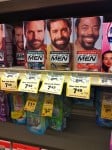 Is that going to finally attract those grey-bearded guys who’d been hoping that someday, they’d make men’s brush-in color gel eighty cents more affordable just for them? Is that a way to goose margins? Are those grey-bearded men a big, under-served market? Have their wives been waiting for the day this product would be available for under $8?
Is that going to finally attract those grey-bearded guys who’d been hoping that someday, they’d make men’s brush-in color gel eighty cents more affordable just for them? Is that a way to goose margins? Are those grey-bearded men a big, under-served market? Have their wives been waiting for the day this product would be available for under $8?
I don’t think so!
When a customer needs a niche product, it doesn’t matter what the price is or was; customers aren’t waiting. So who thinks this will positively alter customer behavior? Panicked store marketers.
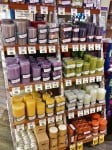 But it wasn’t just yellow tags that numbered in the thousands. Oh no, there were white tags on shelves for any new product. Again, not just on a few things but on everything.
But it wasn’t just yellow tags that numbered in the thousands. Oh no, there were white tags on shelves for any new product. Again, not just on a few things but on everything.
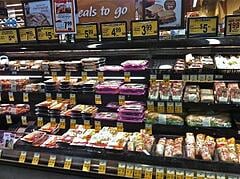 Or how about Safeway’s Meals-To-Go section which had three prices for everything and a $7.99 sign stuck in front of that sign? Isn’t what they are selling convenient meal replacements for time-starved moms who are willing to pay anything– who want food for their family NOW?
Or how about Safeway’s Meals-To-Go section which had three prices for everything and a $7.99 sign stuck in front of that sign? Isn’t what they are selling convenient meal replacements for time-starved moms who are willing to pay anything– who want food for their family NOW?
Customers just want to buy. It can feel like work to try to sort out all the marketing garbage these stores are using. A customer's mantra: Don’t make me think!
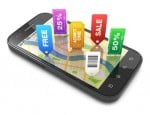 And with all the excitement about digital, multi-channel and mobile products being able to deliver “personalized value” and “close the loop” on loyalty, these same tactics are bound to do to our smartphones the same thing Rite Aid and Safeway did to their shelves.
And with all the excitement about digital, multi-channel and mobile products being able to deliver “personalized value” and “close the loop” on loyalty, these same tactics are bound to do to our smartphones the same thing Rite Aid and Safeway did to their shelves.
Is that really going to be “customer centric?”
I don’t think so…
Aren’t they just adding paperless coupons to the mix? Paperless coupons that scream in the palms of your customers’ hands?
Not only will they be a problem for the eyes but also the heads and hands. And they are bound to make your customers even more frustrated.
If you're going to market in your store, whatever you sell, don't think more tags and labels are better. More is just more.
Keep it simple for us to shop and have meaningful signs and shelf tags - not mindless repetition that tells us to tune it all out. Have one big creative sign that intrigues or encourages purchase. Have better end-caps that feature a variety of products that all work together. Look at building a higher average ticket through better merchandising and display rather than price, price, price.
My point...
If we become numb to you, annoyed or irritated…if we feel shopping is a chore where not only do we have to take the time to go up and down the aisle, but we also have to navigate through all the “deals,” we’ll go elsewhere where we’re treated like humans, not like rats looking for the cheese.
And because we’re not angry, just frustrated, we won’t call and tell you, we’ll just avoid you. Which of course means you’ll think it’s because you didn’t provide enough deals….
And you’ll add more shelf tags...
Please enter your comments below…